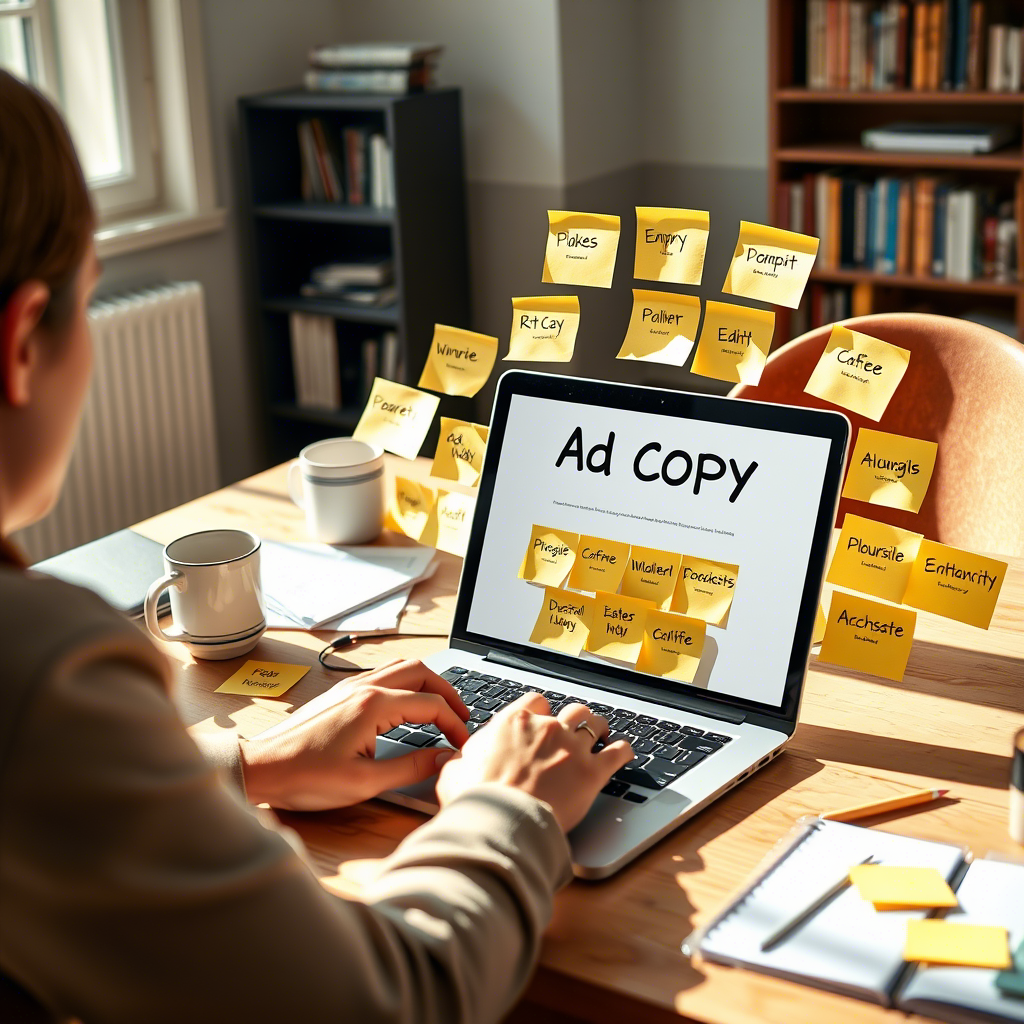Imagine this: You’ve spent weeks perfecting your product, designing a stunning website, and driving traffic to it. Yet, when visitors arrive, they leave empty-handed. Why? The problem might not be your product—it could be your ad copy.
Effective ad copy isn’t just about shouting “Buy Now!” It’s a science and an art form that bridges the gap between curiosity and action. In a world where consumers are bombarded with 10,000 ads daily, your message must cut through the noise, resonate emotionally, and persuade decisively.
This article will guide you through the principles of crafting ad copy that doesn’t just grab attention—it converts . We’ll explore audience psychology, the power of storytelling, and actionable strategies to turn visitors into lifelong customers.
Whether you’re a marketer, entrepreneur, or small business owner, these insights will help you write ads that sell.
1. Know Your Audience: The Foundation of Persuasion
The most persuasive ad copy starts with a deep understanding of who you’re addressing. Without knowing your audience’s pain points, desires, and language, your message will fall flat.
Why It Matters:
- A 2023 survey by HubSpot found that 79% of buyers choose brands that personalize experiences .
- Example: A bakery targeting busy professionals might emphasize “quick, healthy breakfast options,” while one targeting parents could highlight “allergy-friendly treats.”
How to Research Your Audience:
- Use tools like Google Analytics or social media insights to analyze demographics.
- Create buyer personas: Write profiles of your ideal customers, including their goals, frustrations, and daily routines.
Tip: Start your ad copy by addressing the audience directly. Instead of “This product is great,” try “Struggling to organize your home? Our smart storage solutions save you 2 hours a week.”
2. The Power of a Clear Value Proposition
Your value proposition (VP) is the “why” behind your product. It’s the answer to the question: “What’s in it for me?” Ads that clearly communicate value outperform vague or generic messaging every time.
Key Elements of a Strong VP:
- Specificity: “Save 50% on your first order” vs. “Big discounts available.”
- Urgency: “Offer expires in 24 hours.”
- Benefits Over Features: Instead of “Our software has AI tools,” say “Automate your workflow and reclaim 10 hours a week.”
Example Comparison:
- Weak: “Get our premium skincare.”
- Strong: “Reduce wrinkles by 30% in 2 weeks with our dermatologist-approved serum.”
Actionable Takeaway: Use bullet points to highlight benefits. For instance:
- ✅ “No contracts required.”
- ✅ “Free shipping on all orders.”
3. Tap into Emotions: The Heart of Persuasion
Humans don’t buy rationally—they buy emotionally. Great ad copy connects with feelings like excitement, fear of missing out (FOMO), or nostalgia.
Emotional Triggers to Leverage:
- FOMO: “Only 3 spots left!”
- Belonging: “Join thousands of satisfied customers.”
- Aspiration: “Travel the world with our lightweight luggage.”
Storytelling Analogy:
Think of ads as mini-stories. For example, a gym ad might frame weight loss as a journey:
- “Imagine walking into a room confident, not counting calories. Start your transformation today.”
Transition: But knowing your audience and delivering value isn’t enough—you need a clear call to action.
4. Command Attention with a Compelling Call to Action (CTA)
Your CTA is the final push that turns browsers into buyers. It should be specific, urgent, and easy to act on.
CTA Best Practices:
- Clarity: Avoid vague phrases like “Click here.” Instead, use “Claim Your Discount” or “Start Your Free Trial.”
- Urgency: “Limited-time offer” or “Next 10 customers get free shipping.”
- Scannable Design: Place CTAs in high-visibility areas, like the top or end of an ad.
A/B Testing Example:
A SaaS company increased conversions by 22% by changing its CTA from “Sign Up” to “Start Your Free Audit.”
Bonus Tip: Use action verbs and bold formatting to make CTAs pop.
5. Refine and Iterate: The Science of Optimization
Even the best ad copy can be improved. Testing and refining ensures you’re always moving closer to perfection.
Strategies for Optimization:
- A/B Testing: Test two versions of an ad to see which performs better.
- Analytics: Track metrics like click-through rates (CTR) and conversion rates.
- Feedback Loops: Ask customers why they chose your product, and incorporate their language into ads.
Example: A skincare brand tested headlines and found that “Glow-Up in 7 Days” outperformed “Effective Serum.”
Conclusion
Crafting compelling ad copy is a blend of empathy, strategy, and creativity. By understanding your audience, communicating clear value, tapping into emotions, commanding action, and refining relentlessly, you can turn visitors into lifelong customers.
Your Next Steps:
- Audit your current ads using the principles outlined here.
- Create a buyer persona and tailor your messaging to their needs.
- Run an A/B test on your next campaign.
Final Thought: Great ad copy isn’t written—it’s crafted . It’s a dialogue that speaks to people’s deepest desires and fears. What’s one change you’ll make to your ads today? Share your thoughts below!




